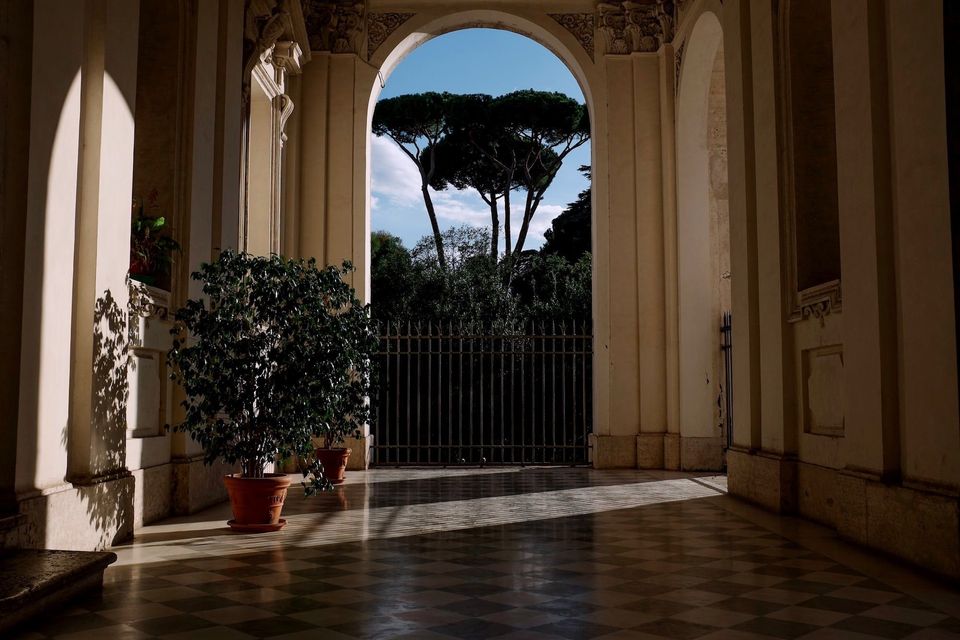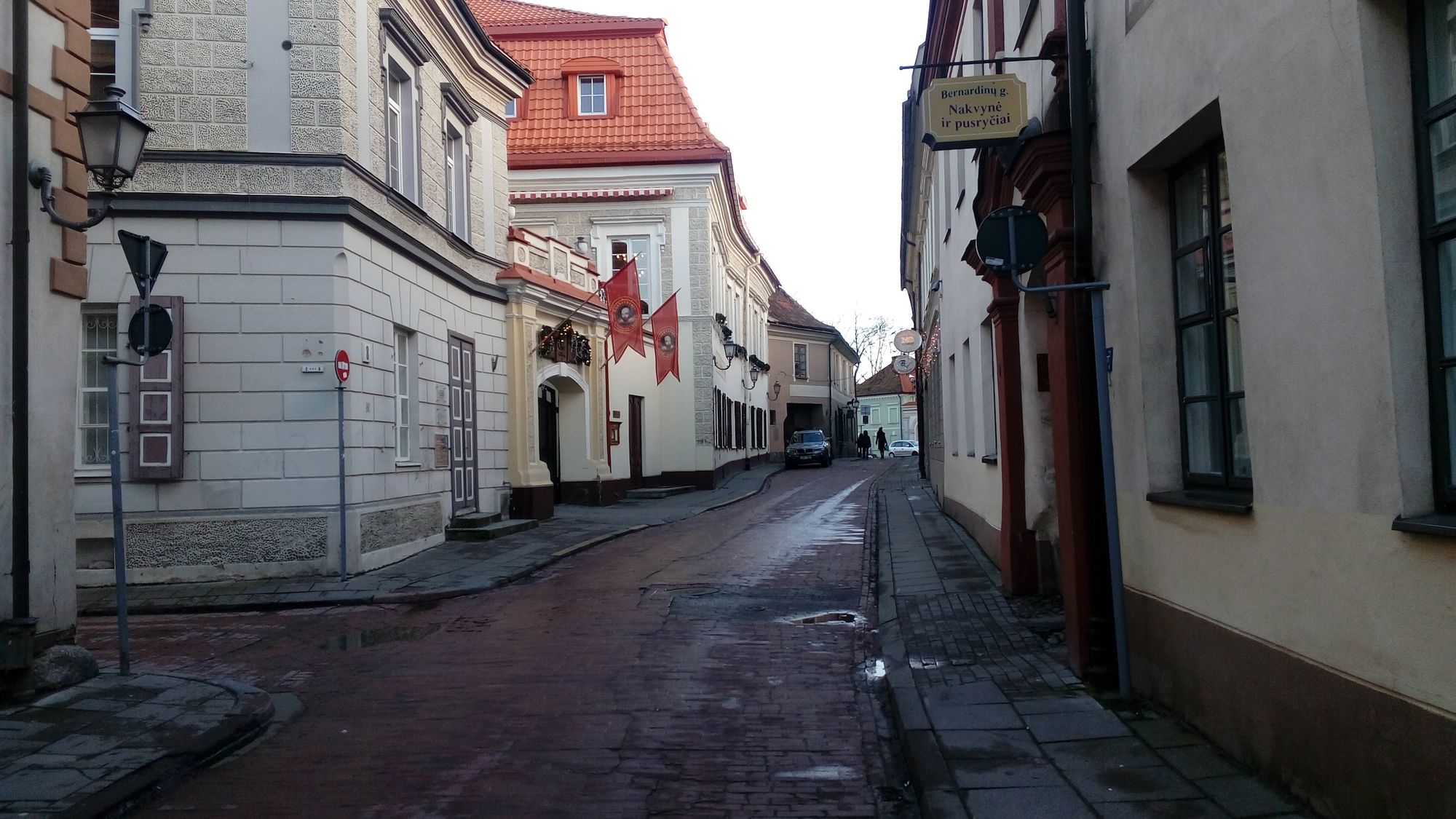Walking in Vilnius, Walking in Rome with Kerry Kubilius

Dear readers,
It's been a while since I updated The Flâneurs Project. The main aim of this project is to compile an archive of stories and maps from flâneurs all around the world, whilst also building a small community of curious people interested in visual aesthetics, art, curation, literature, history, and urban design.
For the time being, I will focus on interviewing 100 flâneurs and update this website more frequently. I will also start a series of monthly in-person salons and dinners in Amsterdam and The Hague next year.
Today I am sharing an interview that I conducted with Kerry Kubilius. I met Kerry in October, in Spain, during an EU fellowship for women entrepreneurs. We were both part of the Aranda de Duero cohort, living for one month in the Julia Hotel. I was immediately drawn to Kerry's observational nature, her capacity to enjoy the fine things in life, and her ability to truly listen. For those reasons and many more, I was very keen to ask her a few questions about the cities that she enjoys to explore on foot.
Hi, Kerry, thank you for taking some time to answer these questions for The Flâneurs Project! Please tell us a bit about yourself and any creative projects that you are working on.
I’m an American living in Vilnius, Lithuania. I grew up in the Midwest, but I developed an interest in the region of Eastern Europe early and cultivated it throughout my education and career, so eventually moving to Vilnius as a person of Lithuanian heritage felt natural.
One project I’m currently excited about it is the relaunch of my discussion group series, which seeks to talk about topics relevant to our time and humanity and attract people who are curious, open-minded, and interested in learning and self-development.
How do you feel exploring Rome on foot in comparison to Vilnius?
I’m drawn to cities I can walk, and both Rome and Vilnius are eminently walkable, but it’s their size that’s different. Vilnius, has a relatively compact area to explore on foot. In Rome, I found myself wondering how many months or years it would take to truly discover every walkable nook and cranny. Both places have the benefit of being flat, at least in the center, with sidewalks present if not always wide enough for need.
What is your favourite street / area in Rome and why?
Rome unfolds joyful surprises around every corner, from a cheerful lemon tree in an enameled pot to ancient ruins standing as a testament to history to squares harmonious in their architecture to mosaiced basilicas glittering with artistry. And each change with the light, whether morning, afternoon, or the golden hour before sunset.
I very much enjoyed strolls through the Villa Borghese Gardens, where Villa Borghese keeps safe the completely transcendent Bernini sculptures. Just being in proximity to them inspires awe.

What café or restaurant did you visit the most often in Rome?
A little restaurant, all of 12 tables, operated near the apartment I was renting. When I sat at the bar, I could see through the windows to the kitchen the big batches of beautiful, fresh potato chips the cooks would fry up.
I’d order burrata, a side of chips, and a glass of lovely red wine, and I was moved to gratitude for such perfection in simplicity. The sublime crunch, the balanced saltiness of those chips, still warm from the fryer!
The next year I visited, the restaurant had changed ownership and the chips were gone from the menu. It felt like trying to visit a friend who you’ve suddenly discovered has moved to an unknown address.
Please share a serendipitous moment from a walk in Rome.
This story is more mysterious than serendipitous, but it does highlight the benefits of walking.
And I did walk everywhere while in Rome. My usual pattern was to choose a destination and use Google maps to discover what potential sights I could see along the way. One day, I was visiting the House of Owls, a mid-19th-century house decorated with Art Nouveau elements. My walk took me past a walled enclosure. Out of curiosity, I followed the wall until I found the gate standing closed. Inside was a well-groomed garden and the implication of a house set back from the road, but the general sense was one of deep and quiet privacy.
My later research revealed that inside that enclosure was the house of a prince, and the house had not been open to photographers since in the 1970s. It was not a “sight” per se, but it certainly tempted the imagination. Was the old prince tottering around inside? Did he have any family? What will eventually happen to the house and grounds?
Please share a story of a stranger that you met or passed by on the streets and why that moment stayed with you until now.
I was about to cross a busy street in the Prati area of Rome. As a woman was in the middle of crossing, the walk light turned red. A car stopped and honked at her, completely unjustified – all the other cars were still stopped. She halted in her tracks, looked the driver in the eye, and gave him the middle finger for a beat of five. She was not going to be bullied, and she was not going to apologize.
Whenever someone tells us to move out of the way, that they’re more important or more powerful, we should all channel that woman.
What is your personal definition of the flâneur / flâneuse?
A flâneuse is someone curious and keen on observation who takes joy in the small gifts of her surroundings. She’s interested in feeling the rhythm of the place she’s in and understanding its character with an unhurried approach.
In what area in Rome or Vilnius did you not feel safe?
I’ve honestly not felt unsafe in any particular area of either city. However, I do feel unsafe having to share pedestrian ways with bikes and electric scooters. In some seasons, taking a walk feels risky. I really feel for older adults, children, and anyone with mobility impairments, for which the risk of collision is greater and potentially more damaging.
What part of Vilnius would you like to re-enchant and why?
I would like to re-enchant the old town area of Vilnius. During one of my first years here, I turned the corner and a bunch of Napoleonic soldiers poured out of the back of a van as a part of a movie shoot. I avoid the chaos and the prices of the old town area for the most part these days, so I miss such encounters.

If you could name a street – what name would you choose for that street?
Let’s live on streets named for concepts and qualities that uplift us and give us hope: Possibility Lane, Heartfelt Way.
If you could move to another city tomorrow (and have every expense covered, job security, a new home) what city would you choose, if you had to go with your first gut instinct?
I would like to say Rome – and I know well that visiting a place is different than living in it – but right now, for today, that’s what I’ll say. The answer could be different tomorrow or one year from now. Maybe I’ll live in an estate in the middle of the city enclosed by walls with a chef who makes me fresh, perfectly seasoned potato chips and a gate that is always open to friends not afraid to give the middle finger to anyone trying to push them around.
You can follow Kerry on LinkedIn or Mastodon.
Thank you for reading and for listening. If you would like to have your stories shared on The Flâneurs Project, you can book a 1:1 call with me here. You can also follow me on Substack, I run a newsletter called The Arcades.
Onwards,
Patricia
Member discussion